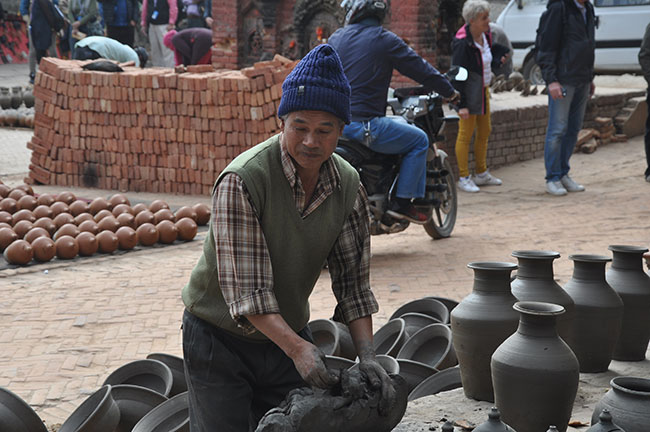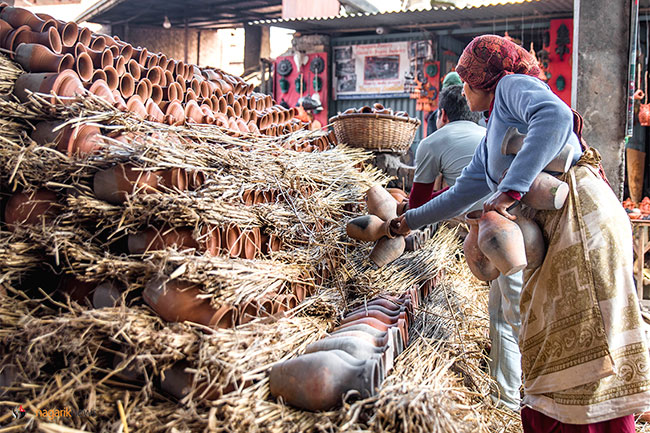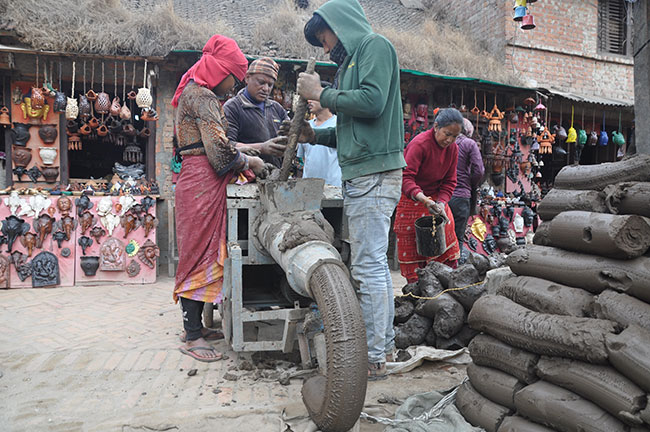Cham: The Dance Meditation (With Video)
5 years ago

5 years ago

5 years ago

5 years ago

5 years ago

5 years ago

Bhaktapur has never failed to amaze its visitors with its age-long artistry. Far from the hustle and bustle of city life, at the south of Bhaktapur Durbar Square, there resides a Newar community that has been depending on clay for survival since time immemorial. One of the communities gaining mastery at molding clays is certainly the Prajapatis, the locals of Bhaktapur.
The occupation has been their ancestral source of earning daily bread and butter. From the time their ancestors started with clays, pottery has grown much broader to this day. Amidst the silent revolutions that have taken place in a journey of decades, the transition from manual to machine work has occupied great space in pottery now.
68-year-old Ganesh Man Prajapati learned to mold clays from his father and grandfather at a tender age of nine. Since then he has been serving his skills as a potter. He never had a closer look on how machines worked however; he finds relief in molding clays all day long in electric pottery wheel. "Manual pottery wheels are what we started from, but electric wheels are much more efficient to work with. Although with the old wheels you can mold perfectly, its takes a huge toil to operate inviting possible back aches", said Prajapati.
It is not only the making process that invited machinery transformation but also the method of mixing clays. Earlier, the locals used to manually knead the clay, however following the increase in productivity, machines replaced the manual process to the mixing of black and brown clays. Only black clays can be used but the equal mixture of both the clays gives perfect shape to every molding. “Since clay is the key base for pottery, the mixture should be equally balanced to give it the required shape. For the clays that are mixed in a huge quantity, we can better rely on machines to do the work efficiently," said one of the 47-year-old potters, Laxmi Prasad Prajapati.
Heating up clay pots is the final and fundamental process before they are sold away to the wholesalers. Traditional method is carried out with making thick layers of straw and clay pots being placed on each layer while new method is carried out with clay pots heated up in chimneys. “As traditional method is much of a hassle and is time consuming, the new method has been gaining priority,” said 45-year-old potter, Tara Devi Prajapati. “Although the traditional method of heating clay pots takes three to four days and is still applicable today, the new method encourages productivity which can be done away with in about 12 hours,” she added.
As pottery has come this far, many of its early and ancient creations have disappeared. Huge clay pots used for household works like ghyampa (rice container), thyakafum (wine container) and gagri (water container) have been replaced by other alternatives degrading it monetary value and demand in the market. However, smaller items used for religious purpose like pala (clay lamp), patu (container to offer food for religious purpose), hadi (container used for religious purpose especially at Pashupatinath Temple) and gapacha (water container for death rituals) lived out and are widely in use today. “Although we have a long history to follow, but I believe it is very important to adapt new methods and prepare ourselves as per the need of time. It is also a way to encourage and connect with the younger generation,” said 26-year-old potter, Bibek Prajapati.
As believed by Darwin’s evolutionary theory, ‘survival of the fittest’, it defines the principle that organisms adapting to the environment they live in are more likely to stay alive and continue their existence than those that are not suited or cannot adapt. On such note, surpassing possible boundaries, pottery has survived molding new trends with the older ones. Many a times coming out of the conventions could nurture creativity leading us to new inventions because it is with innovations and easy functioning that we can actually help preserve the essence of art and culture.



Leave A Comment